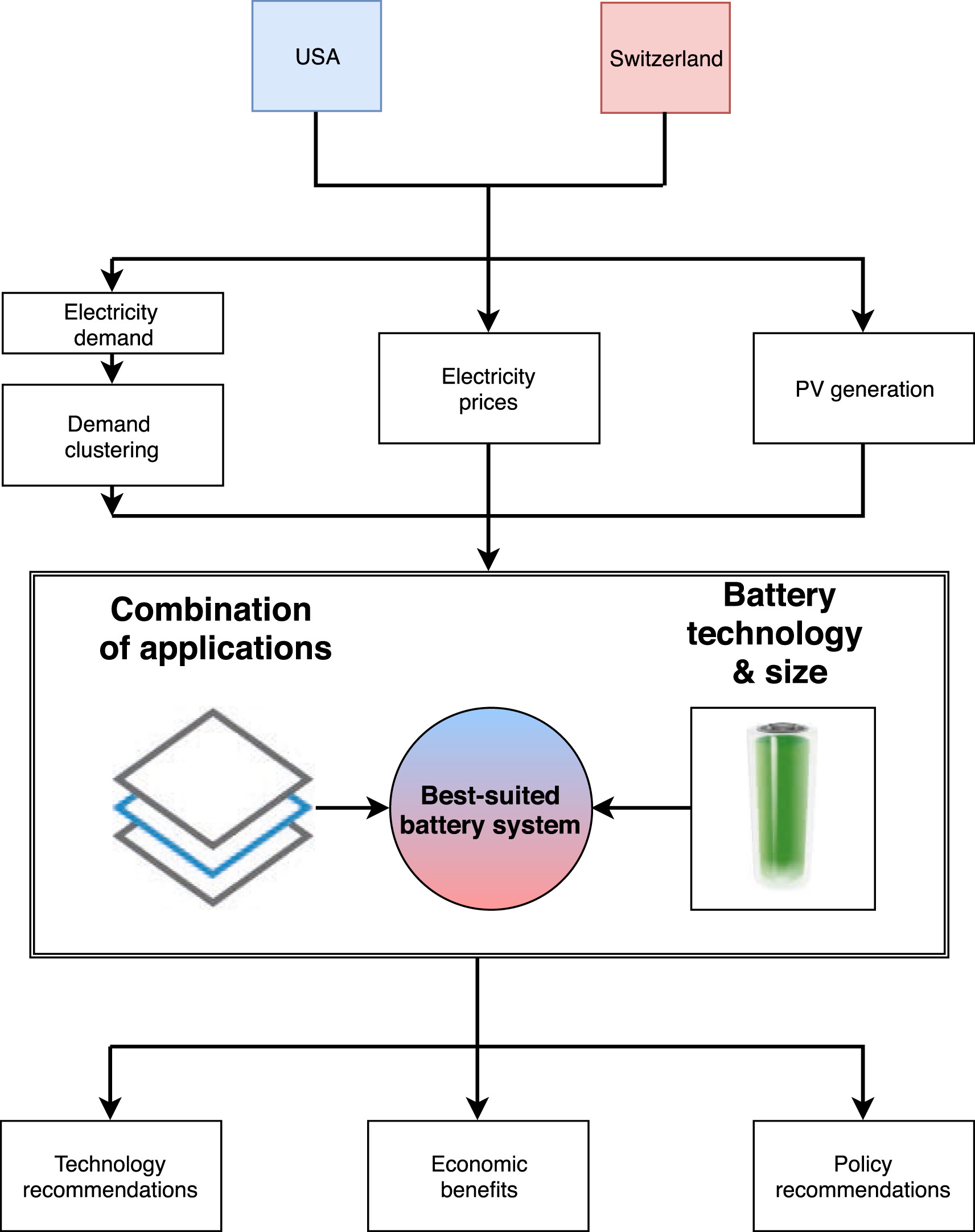Optimized PV-coupled battery systems for combining applications: Impact of battery technology and geography
September 1, 2019.
Distributed energy storage systems are becoming more and more popular and seem set to become a large part of our future energy conversation, given the proliferation of rooftop PV systems. In particular, the price of batteries has decreased dramatically in the last few years. Bloomberg New Energy Finance recently reported that the price of batteries for Electric Vehicle manufacturers has fallen 85% from \$1160/kWh in 2010 down to \$180/kWh in 2019. Of course, these prices are for large scale battery purchases for EVs, and this is still far too expensive for large scale grid energy storage (remember that a kWh of electricity on the wholesale electricity market costs less than 5 cents). However, this lowering of prices is making batteries more and more appealing for households who buy their electricity from the retail market (where electricity prices may be much higher).
For residential consumers, battery prices are closer to around \$800-1000/kWh when you include inverter costs, operation & maintenance and installation costs. Therefore, there is still widespread recognition that at most current retail electricity prices, batteries don’t yet make economic sense for a majority of consumers, either to increase the energy they use from their PV or to shift their load to less expensive times if they are on Time-Of-Use tariffs. However, batteries have several potential applications. These include:
- PV self-consumption – where surplus local generation is stored and used locally. The cost driver is the price difference between electricity import and export to the grid.
- Avoidance of PV curtailment – in some regions there is a feed in limit which restricts the maximum power a consumer can export to the grid.
- demand load shifting – using the battery to move consumption and exploit time-varying tariffs (i.e. TOU tariffs).
- Demand peak-shaving - The battery is used to reduce the maximum power drained from the grid, since often consumers are charged in relation to their maximum power draw.
- Backup generation – arguably the most valuable reason for a battery and the reason for a majority of historical stationary battery storage installations. The financial return on this is very difficult to quantify for residential consumers.
In our latest study, Optimized PV-coupled battery systems for combining applications: Impact of battery technology and geography, published in Renewable and Sustainable Energy Reviews, we study the economic case for residential batteries. The work was led by my colleague at the University of Geneva, Alejandro Pena-Bello. The work considers combining these different battery applications with a range of different electricity tariffs in Austin, TX, and in Geneva, Switzerland. We have electricity consumption data for households in both locations. We find that batteries simultaneously performing several applications are not profitable yet under existing market conditions in either of the studied locations, however the combination of applications help batteries to become closer to break-even by improving the net present value by up to 66% when compared with batteries performing PV self-consumption only. In particular, demand peak shaving can offer high value dependent on the local regulatory structure.
Notably the optimisation framework used in our study is open-source and can simulate different battery chemistries. The optimisation framework is illustrated in Figure 1.

Fig. 1: A schematic diagram illustrating the modelling and optimisation framework developed by the paper.
For more information, please refer to the paper.